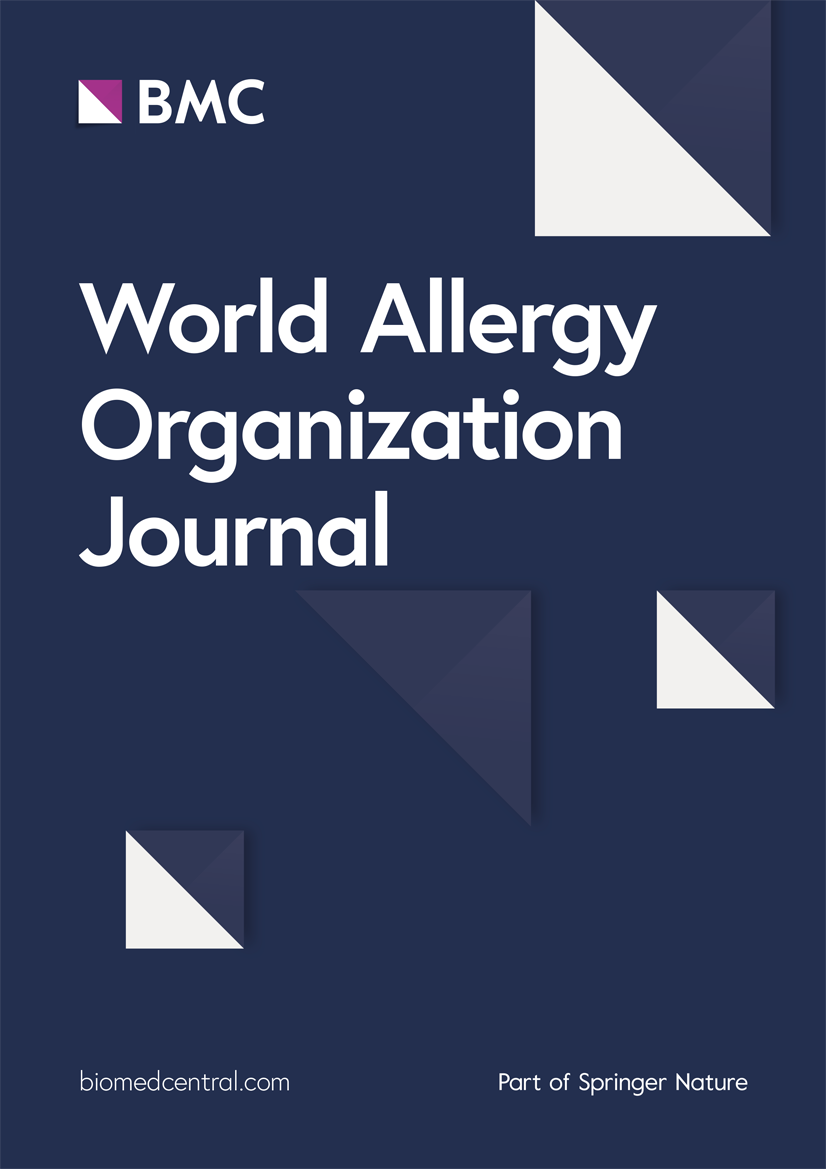过敏性皮肤病:1990年至2021年全球疾病负担及未来趋势
IF 4.3
2区 医学
Q2 ALLERGY
引用次数: 0
摘要
背景:过敏性皮肤病,包括特应性皮炎(AD)、荨麻疹和接触性皮炎(CD),是全球重大的公共卫生挑战。目前,全球缺乏对过敏性皮肤病的系统分析。方法本研究旨在量化AD、CD和荨麻疹的全球负担,并评估它们的全球流行病学模式。全球疾病负担(GBD)数据库用于评估这些过敏相关皮肤病的发病率、患病率和残疾调整生命年(DALYs)。此外,贝叶斯年龄-时期-队列(BAPC)模型用于预测未来15年的疾病负担。结果从1990年到2021年,AD、CD和荨麻疹病例稳步上升。2021年,AD患病率达到1.29亿,比1990年增加20.02%。然而,AD年龄标准化患病率(ASPR)的平均年百分比变化(AAPC)值持续下降(AAPC = - 0.28)。乳糜泻的发病率最高,在2021年有2.53亿新病例,尽管乳糜泻ASPR的AAPC变化很小。阿尔茨海默病和荨麻疹在生命早期达到高峰,而乳糜泻在75-79岁达到高峰。此外,AD与社会人口指数(SDI)呈正相关(p = 2.2e-16, ρ = 0.626)。AD、CD和荨麻疹分别在高、中、中低SDI地区显示最高的年龄标准化率,在高SDI地区所有3种情况均下降。健康不平等分析显示,阿尔茨海默病的负担现在在SDI群体中分布更均匀,而荨麻疹和乳糜炎的全球负担差距变化有限。结论尽管全球过敏相关皮肤病的疾病负担持续上升,但AD的总体年龄标准化发病率稳步下降,并预计将进一步下降。相比之下,乳糜泻和荨麻疹需要更多的关注。本文章由计算机程序翻译,如有差异,请以英文原文为准。
Allergic-related skin diseases: Global disease burden from 1990 to 2021 and future trends
Background
Allergic-related skin diseases, including atopic dermatitis (AD), urticaria, and contact dermatitis (CD), are significant global public health challenges. Currently, there is a lack of systematic analysis of allergic-related skin diseases globally.
Methods
This study aimed to quantify the global burden of AD, CD, and urticaria and evaluate their global epidemiology patterns. The Global Burden of Diseases (GBD) database was used to assess incidence, prevalence, and disability-adjusted life years (DALYs) for these allergic-related skin diseases. Additionally, the Bayesian Age-Period-Cohort (BAPC) model was employed to predict disease burden for the next 15 years.
Results
From 1990 to 2021, cases of AD, CD, and urticaria rose steadily. In 2021, AD prevalence reached 129 million, a 20.02% increase from 1990. However, average annual percentage change (AAPC) values for the age-standardized prevalence rate (ASPR) of AD declined constantly (AAPC = −0.28). CD had the highest incidence, with 253 million new cases in 2021, though AAPC for ASPR of CD showed minimal changes. AD and urticaria peaked in early life, while CD peaked at ages 75–79. Moreover, AD had the strongest positive correlation with the Socio-demographic Index (SDI) (p = 2.2e-16, ρ = 0.626). AD, CD, and urticaria show the highest age-standardized rate in high, middle, and low-middle SDI regions, respectively, with all 3 conditions declining in high SDI. Health inequality analysis showed AD's burden is now more evenly distributed across SDI groups, while the global burden gap for urticaria and CD change limitedly.
Conclusion
Although the global disease burden of allergic-related skin diseases continues to rise, the overall age-standardized rates of AD have steadily declined and are projected to decrease further. In contrast, CD and urticaria require increased attention.
求助全文
通过发布文献求助,成功后即可免费获取论文全文。
去求助
来源期刊

World Allergy Organization Journal
Immunology and Microbiology-Immunology
CiteScore
9.10
自引率
5.90%
发文量
91
审稿时长
9 weeks
期刊介绍:
The official pubication of the World Allergy Organization, the World Allergy Organization Journal (WAOjournal) publishes original mechanistic, translational, and clinical research on the topics of allergy, asthma, anaphylaxis, and clincial immunology, as well as reviews, guidelines, and position papers that contribute to the improvement of patient care. WAOjournal publishes research on the growth of allergy prevalence within the scope of single countries, country comparisons, and practical global issues and regulations, or threats to the allergy specialty. The Journal invites the submissions of all authors interested in publishing on current global problems in allergy, asthma, anaphylaxis, and immunology. Of particular interest are the immunological consequences of climate change and the subsequent systematic transformations in food habits and their consequences for the allergy/immunology discipline.
 求助内容:
求助内容: 应助结果提醒方式:
应助结果提醒方式:


